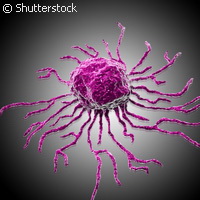Change in environment sparks stem cell cross-over
EU-funded scientists have discovered that stem cells from one of the immune system's main organs can be reprogrammed to form hair follicle stem cells. The key lies in altering the environment in which the cells are grown. These results demonstrate that it is possible to alter stem cells without genetic manipulation. Details of the study are published in Nature. Ectoderm, endoderm and mesoderm are the three germ layers that develop as an embryo grows. Over time, these layers form the basis of skin and nerves (ectoderm) of the gut, liver, pancreas, thymus and other organs (endoderm), and of muscle, bones and blood (mesoderm). Scientists have always thought that the boundaries that define these layers could not be crossed. However, results from this latest study now demonstrate that the boundaries are much more versatile, and that stem cells that switch layers can produce startling results. The team from Ecole Polytechnique Fédérale de Lausanne (EPFL) in Switzerland and the University of Edinburgh in the UK has shown that cells originating in one germ layer (in this case, thymus stem cells originating from the endoderm) can be developed into cells associated with one of the other two layers (skin stem cells originating from the ectoderm). To determine their findings, the scientists grew stem cells from the thymus - an important organ of the immune system - using the conditions required for growing hair follicle skin stem cells. They found that the transplanted cells maintained skin and hair for more than 12 months, which was significantly more than hair follicle stem cells produced under natural conditions. Gradually, the cells' genetic markers remarkably began to resemble those of hair follicle stem cells. This means that a surrounding environment can reprogramme stem cells to generate tissues that, under normal circumstances, would not be possible. Just like stem cells from the thymus (previously thought to be less versatile than other cells), the findings suggest that the cross-over could extend to other organs. This would represent a major breakthrough in the field of organ transplantation and regeneration, and could help many people including burn victims. Dr Clare Blackburn from the University of Edinburgh explained that it is not just that a latent capacity is triggered when these stem cells come into contact with skin, but rather they 'change track - expressing different genes and becoming more potent'. She added that further research could determine whether other microenvironments (beyond just skin) would produce a similar result. This research was supported by the EU's Sixth Framework Programme (FP6) and Seventh Framework Programme (FP7) as part of the work of three projects: EUROSTEMCELL ('European consortium for stem cell research'), which received EUR 11.91 million under FP6's 'Life sciences, genomics and biotechnology for health' Thematic area; EUROSYSTEM ('European consortium for systematic stem cell biology'), which received EUR 12 million under FP7's Health Theme; and OPTISTEM ('Optimization of stem cell therapy for clinical trials of degenerative skin and muscle diseases'), which received EUR 11.99 million also under FP7's Health Theme.
Countries
Switzerland, United Kingdom



